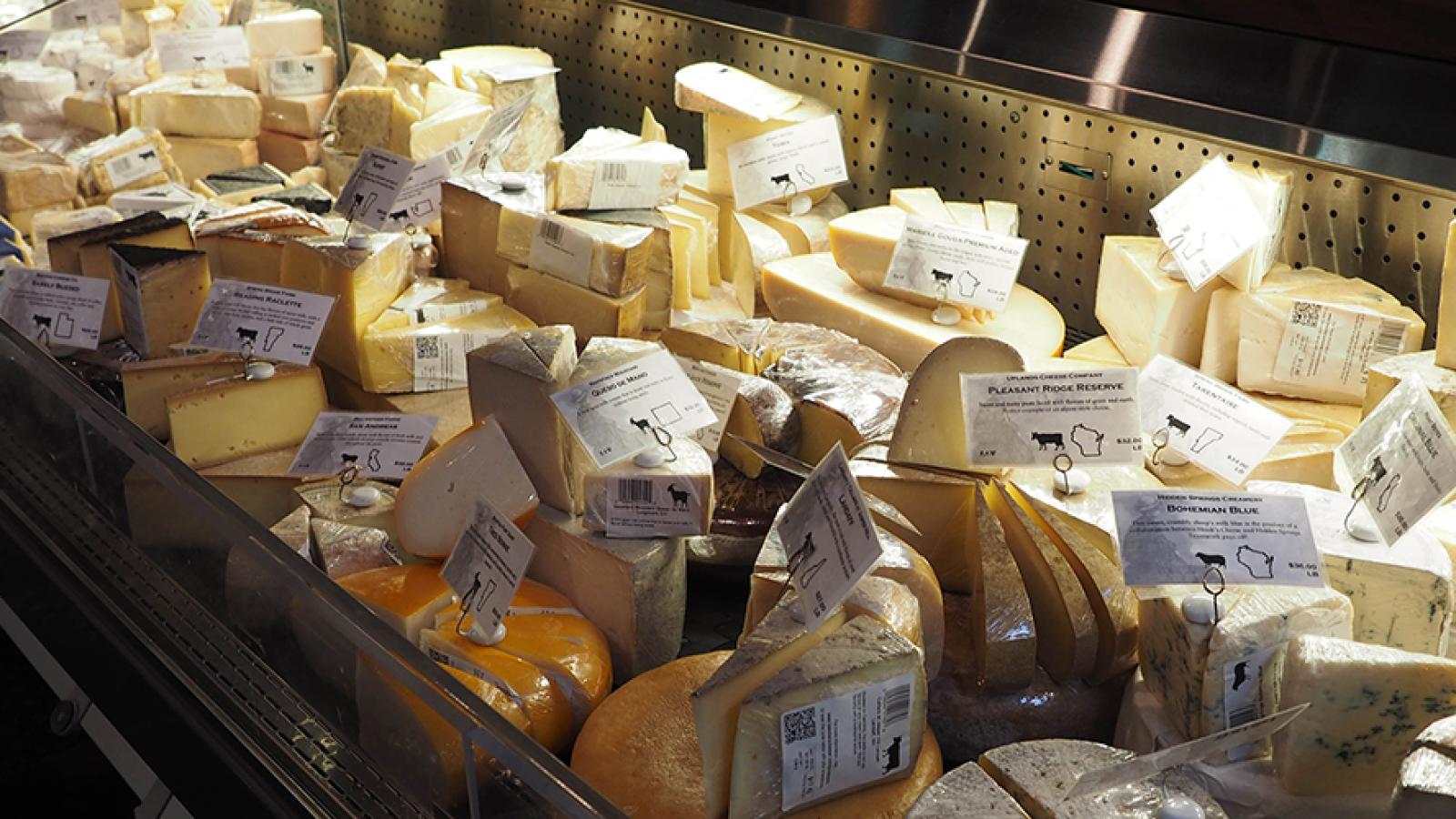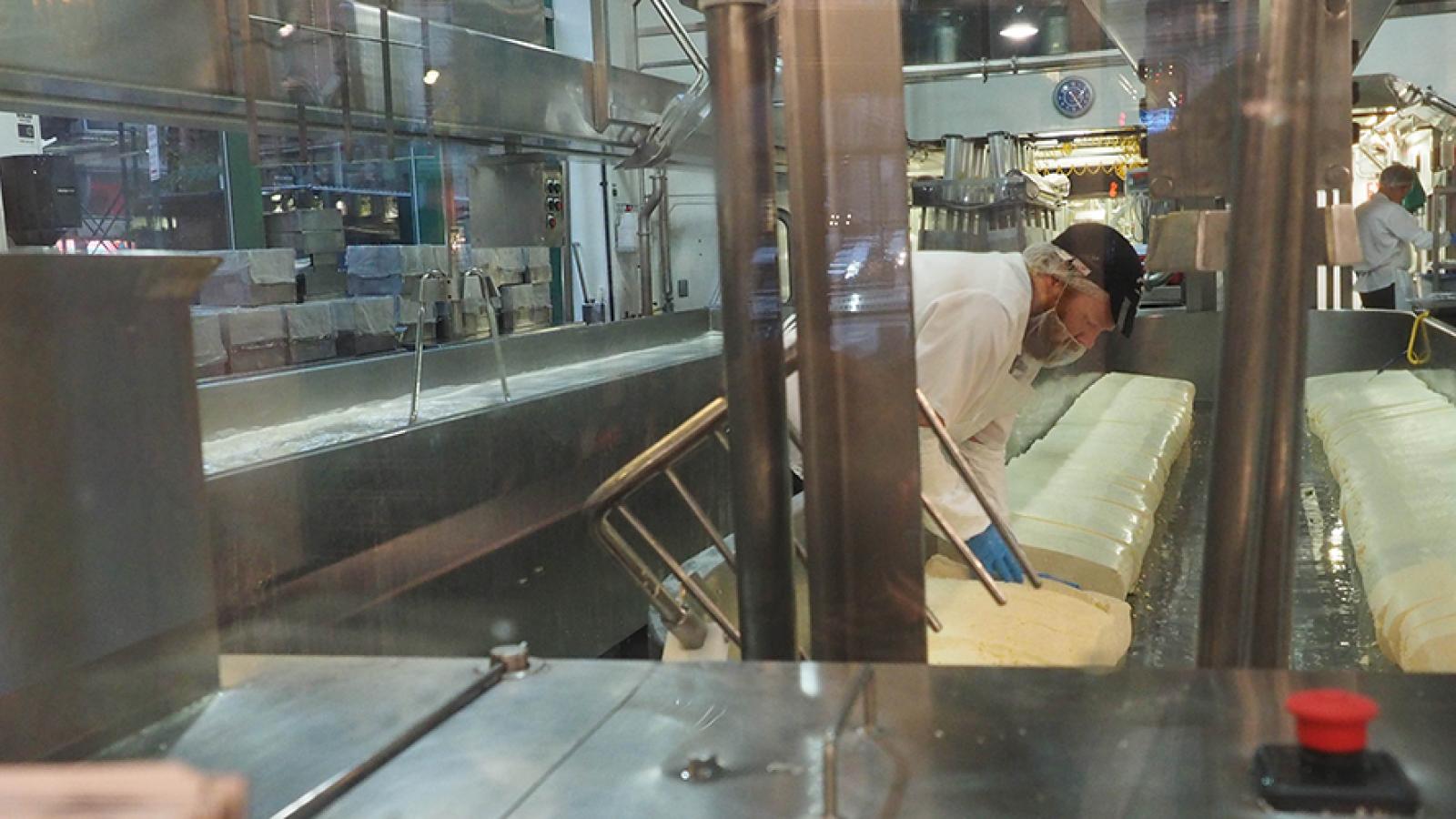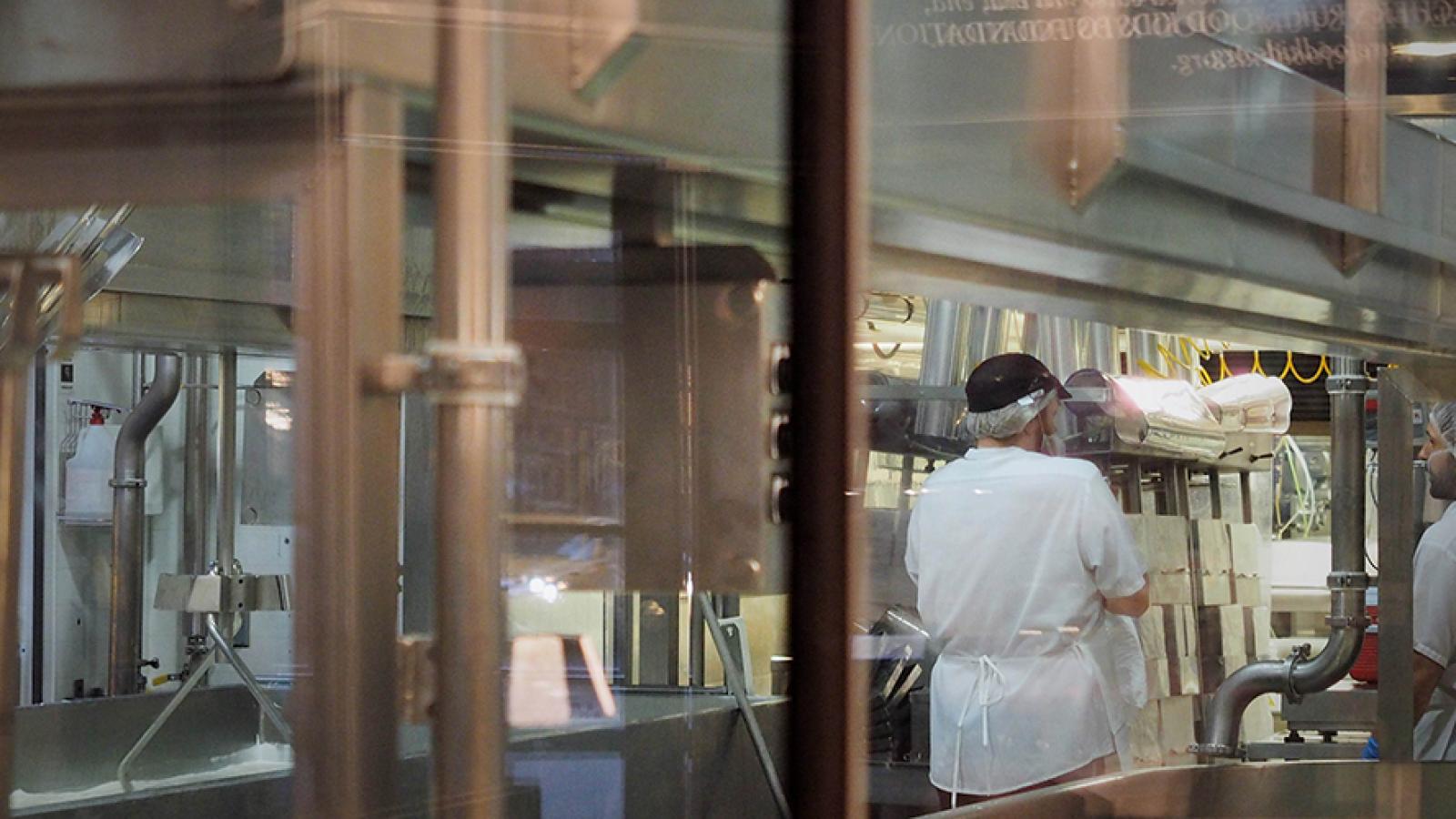Spotlight Business: Beecher’s Handmade Cheese (Flatiron District)
Although a relatively small artisan cheese producer, Beecher’s Handmade Cheese has managed to gain profitable shelf space next to much larger competitors in supermarket giants like Wegmans, by going after key certifications that the supermarkets require, and continuously developing new products. It’s this innovation and intuition – along with popular products – that has driven the cheese maker’s success.
“As a new company we’ve always been ahead of the game,” says Sales Representative Joe Drstvensek. “From the beginning our business plan was always to grow.” In addition to the dozen or so varieties of cheese that they produce, they’re also looking to expand by creating beef and pork products. “We’re dealing with cows all the time. It wasn’t that big of a jump,” says Joe.
With the ambitious goal of “changing the way America” eats – all of their products are free of bovine growth hormones, hydrogenated oils, nitrates and polysorbate – Beecher’s founded their Pure Food Kids Foundation to empower kids to make healthy food choices through hands-on workshops where they become “food detectives.”
Founded in Seattle in 2003 by life-long cheese aficionado Kurt Beecher Dammeier, Beecher’s Handmade Cheese made the transition to New York City in 2011, setting up shop in the Flatiron district. Along with a production factory, they also have a store, café, and restaurant. Customers in the cafe can watch the cheesemakers at work through glass walls, while they snack on Beecher’s signature Flagship cheese or the mac and cheese they’re known for.
Joe says the challenges in opening up the East Coast outpost have to do with building the business while adapting to a very different culture. “[In Seattle] no one wears a suit. It’s really a family. It’s laid back and innovative. People in Seattle are creative and that really does show in our company.” Working at Beecher’s is a point of pride for Seattleites, and prospective employees tend to walk in. “Everyone knows us,” says Joe.
Not only did they have the challenge of establishing brand awareness when they expanded to the Big Apple, but it’s been difficult finding New Yorkers who already have specific cheesemaking experience. People with a city mentality also tend to not quite understand how much work is involved in cheesemaking and it can be difficult to find ones who want to learn the time-intensive craft. “Everyone in NY is looking for the best next thing,” says Joe of the famously flighty culture. Still, their New York factory employs a staff of about 250.
In order to address the lack of candidates with direct cheesemaking experience, Beecher’s tends to look for people who have previously worked in the culinary or manufacturing fields. “It’s a job that depends on a lot of training. Rarely do you find someone that has the exact experience but they may have had jobs that equate,” Joe says. They do extensive in-house trainings since they use a variety of cheesemaking methods.
Joe says you won’t likely find many older workers on the production line because it’s such physically demanding work (although their Director of Production, John is in his 40s) but they do have many older workers in their management offices.
Industry-wide more junior production line workers tend to move around frequently. “You get some that fall off after 4 months, then a year. They might jump to another creamery,” he says, but you will find older Master Cheesemongers because often it take 10 or more years for cheese to mature and they will likely stay to see it through. “It takes that long to really figure out the product,” says Joe. “Cheesemongers want to make cheese. It’s for the love of the art, not for the money. Like a carpenter they take pride in what they’re doing.”
It’s clear Beecher’s Handmade Cheese takes great pride in their products and customers are responding. “Business is going great. It’s been smooth sailing right now,” says Joe. He says there’s been a steady increase in their wholesale division and their café has been packed. “We started in the middle of the recession and so have nowhere to go but up.”



